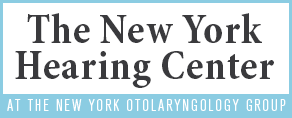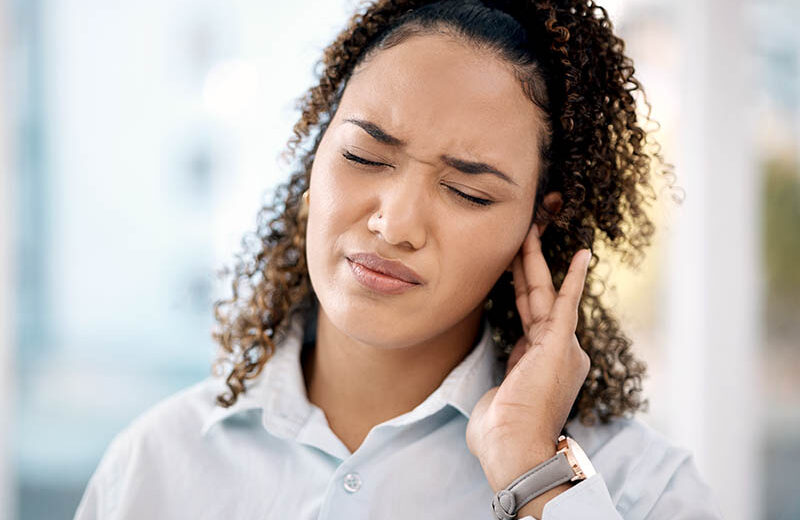Experiencing pain in one or both ears may arise from a variety of underlying causes. This discomfort can manifest as a sharp, sudden ache or persistent throbbing sensation. A thorough understanding of the likely causes of ear pain is essential for identifying practical courses of action for relief. In assessing ear pain, medical professionals typically classify it into two distinct categories. The first category is primary pain, which arises from an issue within the ear. The second category is secondary pain, often referred to as referred pain, where the sensation of discomfort experienced feels as if it was the ear despite the actual source of the problem being found elsewhere in the body.
The Most Common Causes of Primary Ear Pain
Middle Ear Infections (Otitis Media)
A middle ear infection called otitis media represents a significant cause of non-referred ear pain. Such infections frequently arise after respiratory infections, colds, or sinus infections. Epidemiological data indicate that approximately three-quarters of children will experience an ear infection by age three. Although adults may also develop middle ear infections, these occurrences are less common. Middle ear infections typically include symptoms such as pain, potential hearing loss, and fluid drainage from the ear. In pediatric patients, additional symptoms may encompass irritability, decreased appetite, fever, and difficulty achieving adequate sleep. The management of ear infections is crucial. However, the American Academy of Family Physicians indicates that antibiotics are generally not the first-line treatment. Instead, healthcare providers may initially manage a child’s infection with pain relievers or ear drops before determining the need for antibiotic therapy.
Eustachian Tube Issues
The eustachian tube joins the middle ear to the nasal cavity, facilitating balanced pressure within the ears. However, problems within this tube, often caused by inflammation associated with allergies, can lead to discomfort and pain. Significant inflammation may arise during viral infections such as the common cold, sinus infections, or severe allergies. This inflammation affects the lining of the eustachian tube, resulting in an impaired ability to equalize pressure, which can consequently lead to pain.
Ruptured Eardrum
Intense ear pain could mean a ruptured eardrum. Ruptures can happen due to:
• Trauma from extremely loud noises
• Ear injuries
• Ear infections
• Barotrauma
A perforated eardrum may result in tinnitus (ringing in the ears), hearing loss, nausea, dizziness, and ear pain. The positive aspect is that damaged eardrums generally can heal spontaneously. Nevertheless, it is advisable to consult a medical professional if there is a suspicion that a ruptured eardrum contributes to these symptoms.
Barotrauma
Barotrauma occurs when there is a discrepancy between the pressure within the eardrum and the external atmospheric pressure. This condition may arise during activities that involve rapid changes in pressure, such as ascending during an airplane takeoff or descending during scuba diving. Furthermore, congestion caused by a cold or allergic reaction can interfere with the ear’s pressure equilibrium, increasing the risk of developing barotrauma. If you are experiencing pressure-related issues attributable to a cold or allergies, we advise you to consider using decongestants. In cases where ear pain arises due to air pressure changes during air travel, the administration of Sudafed (pseudoephedrine) or an over-the-counter decongestant nasal spray before the flight may be beneficial. Simple techniques for alleviating pressure include chewing gum or yawning.
Swimmer’s Ear
Otitis externa, commonly called swimmer’s ear, is a medical condition characterized by an infection of the tissues within the ear canal. A notable indication of this condition is tenderness upon palpation of the ear canal. It is important to note that swimmer’s ear can occur in various scenarios where water becomes trapped in the ear, not exclusively during swimming activities. Symptoms associated with swimmer’s ear include pain, itching, swelling, and pus drainage from the ear canal. Typically, a doctor will prescribe antibiotic ear drops to treat this condition.
Common Causes for Referred Pain
Temporomandibular dysfunction (TMJ)
The temporomandibular joint can be found by pressing just anterior to the ear while opening and closing the mouth. This region may exhibit tenderness, particularly with bruxism or teeth grinding. Ear pain related to TMJ serves as a notable example of referred pain or when pain in the ear originates from an alternate source. When inflammation occurs in the jaw, the muscles that facilitate jaw movement rub against the eustachian tube. Consequently, individuals may experience sensations of ear fullness and pain; however, the underlying source of discomfort resides outside the ear itself.
Other common conditions that can cause ear pain include:
• Arthritis
• Inflammation in the neck
• Dental Issues
• Sinus infections (sinusitis)
• Acid reflux and GERD
Children and Earaches
Children are more prone to recurring ear infections due to the underdevelopment of their eustachian tubes. Developing immune systems are still maturing and may be unable to combat infections. The anatomical positioning of the eustachian tubes in children increases their likelihood of developing ear infections and experiencing fluid accumulation in the middle ear. As children mature, the orientation of their eustachian tubes changes as they grow, decreasing their susceptibility to infections.
When to See a Doctor
Ear pain is a common medical issue, with some occurrences, such as barotrauma, experienced during air travel. However, we advise you to seek medical attention if you experience specific symptoms, such as hearing loss, discharge from the ear, persistent pain, vertigo, or fever. In most instances, a primary care physician can provide you with the necessary care or provide a referral to a specialist in ear, nose, and throat disorders, known as an otolaryngologist, for comprehensive evaluation and treatment.





